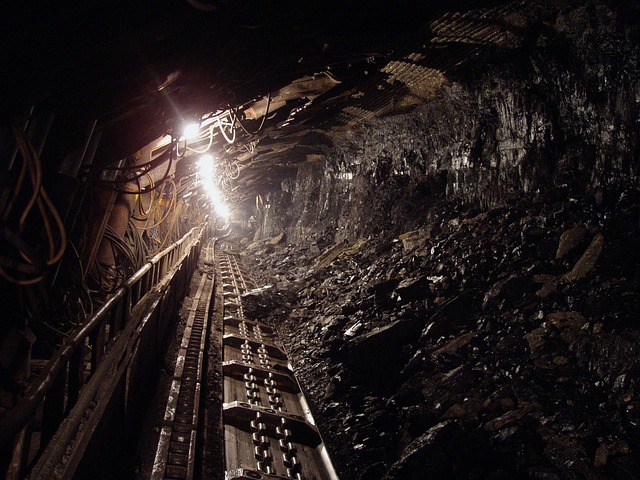Industrial vacuum excavation is a powerful and versatile method for material removal in tight spaces, ideal for construction, utility work, and environmental remediation. Safety is paramount when operating these heavy-duty machines, requiring operator training, proper equipment, and safety protocols. Efficient operation demands careful planning, including site assessment, terrain analysis, and material considerations. Real-world applications showcase its adaptability and safety benefits, making it a preferred technique in urban development, utility installation, and environmental restoration.
“Unleash the power of heavy-duty vacuum excavation—a game-changer in diverse construction and utility projects. This comprehensive guide offers expert insights into the world of industrial vacuum excavation, from equipment mastery to safety protocols and strategic planning. Learn how this innovative technique, involving powerful suction to expose underground utilities, streamlines operations while prioritizing operator safety. Discover real-world applications through captivating case studies, showcasing the versatility and success of industrial vacuum excavation in today’s demanding projects.”
Understanding Heavy-Duty Vacuum Excavation: Equipment and Applications
Heavy-duty vacuum excavation is a powerful method used in various industries for precise and efficient material removal. This technique involves employing specialized equipment to create a powerful suction force, which can extract materials like soil, rock, and even concrete from tight spaces. The process is particularly beneficial in challenging situations where traditional digging methods are less accessible or feasible.
Industrial vacuum excavation machines come in diverse sizes and configurations, each tailored for specific applications. Smaller units are ideal for confined areas and delicate operations, while larger machines handle heavy-duty projects requiring significant force. These versatile tools find use in construction, utility maintenance, roadwork, and even environmental remediation. By offering a non-destructive approach, vacuum excavation ensures the preservation of surrounding structures and utilities, making it a preferred method for safe and precise material removal across various projects.
Safety Measures for Industrial Vacuum Excavators and Their Operators
When operating heavy-duty industrial vacuum excavators, safety should never be compromised. These powerful machines are designed for efficient material removal but come with inherent risks. Operators must be trained and equipped to handle potential hazards. Personal protective equipment (PPE), including specialized clothing, eye protection, and earplugs, is essential to minimize exposure to dust, debris, and noise. Regular maintenance checks are crucial to ensure the machine’s safety systems are functioning correctly, such as pressure sensors, vacuum levels, and emergency shut-off mechanisms.
The work environment also requires careful consideration. Clear the excavation site of obstacles and ensure adequate space for the excavator’s reach. Implement traffic control measures to prevent unauthorized access during operations. Proper signaling and communication protocols should be in place to alert others nearby. Regular safety inspections and operator training sessions help maintain a proactive approach, ensuring that all potential risks are identified and mitigated, thereby enhancing overall job site safety for everyone involved in industrial vacuum excavation projects.
Efficient Planning and Execution Strategies for Diverse Projects
Efficient planning and execution are key when it comes to heavy-duty vacuum excavation, ensuring successful outcomes for diverse projects. The first step involves assessing the scope and specific requirements of each project, as industrial vacuum excavation techniques vary greatly depending on factors like terrain, material types, and desired depth of excavation.
A comprehensive site survey is crucial, considering access limitations, nearby utilities, and potential hazards. This information guides the selection of the appropriate vacuum excavator, attachment, and method. Skilled operators then employ strategic planning, including setting up efficient work zones, implementing traffic control measures, and coordinating with other project teams to minimize disruptions and maximize productivity during excavation.
Case Studies: Real-World Success Stories of Vacuum Excavation
In the realm of heavy-duty excavation, industrial vacuum excavation has proven its mettle across various projects worldwide. Case studies from real-world applications highlight the versatility and efficiency of this method. For instance, in urban settings, where navigating narrow spaces and avoiding critical infrastructure is paramount, vacuum excavation has emerged as a game-changer. A recent project in a bustling metropolis involved laying new utility lines without disrupting the existing network. By employing industrial vacuum excavation, workers were able to swiftly and safely clear a path, minimizing disruptions to traffic and pedestrians below.
Another compelling example involves environmental remediation efforts. At a former industrial site contaminated with hazardous materials, vacuum excavation played a pivotal role in the cleanup process. This non-invasive technique enabled precise removal of contaminated soil without disturbing underlying deposits or causing further environmental damage. These success stories underscore the adaptability and safety benefits of industrial vacuum excavation, making it a preferred method for diverse projects ranging from infrastructure development to environmental restoration.
Heavy-duty vacuum excavation is a versatile and efficient method for diverse projects, from utility location to road construction. By understanding the equipment, safety measures, and planning strategies outlined in this article, professionals can maximize the benefits of industrial vacuum excavation, ensuring safe, timely, and cost-effective results. These real-world case studies demonstrate the power of expert guidance, highlighting successful applications across various industries. Embracing these practices will continue to drive innovation and excellence in the field of industrial vacuum excavation.
